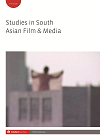
Full text loading...

This article explores how feminism is practised and communicated on digital platforms. Feminism in India and Khabar Lahariya are two online platforms studied with interviews of respondents to understand how the online spaces are used for knowledge sharing that take feminist perspective. New media opened up spaces for people to communicate from any part of the world, create media content and circulate it. Visibility, privacy, accessibility and risks are negotiated by the reporters and content creators to produce alternative cultural production from an intersectional feminist standpoint.

Article metrics loading...

Full text loading...
References


Publication Date:
https://doi.org/10.1386/safm_00056_1 Published content will be available immediately after check-out or when it is released in case of a pre-order. Please make sure to be logged in to see all available purchase options.